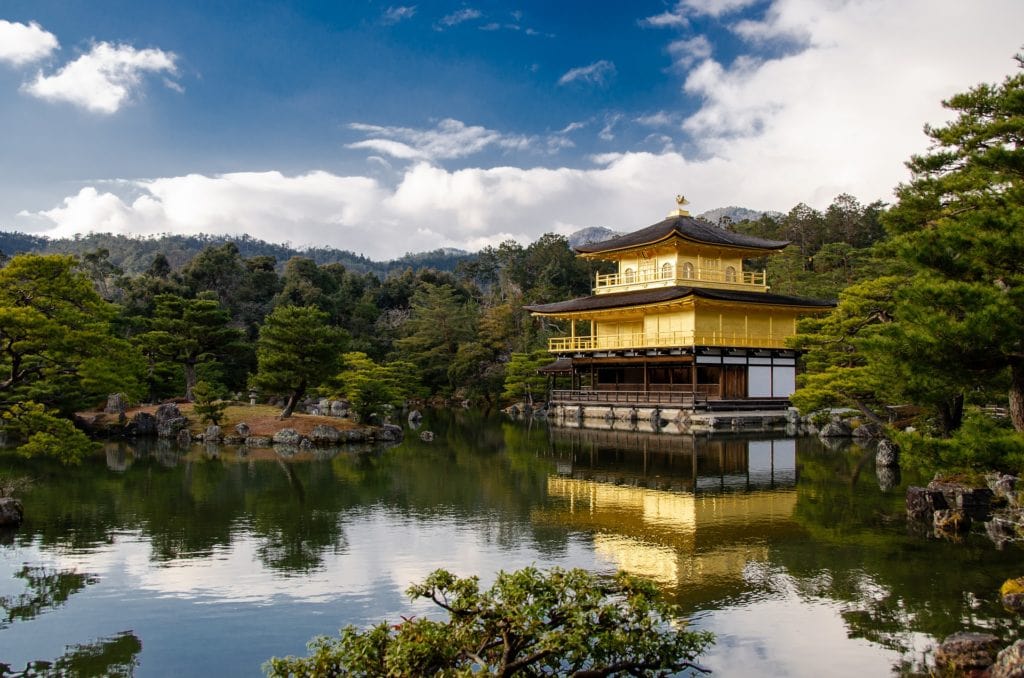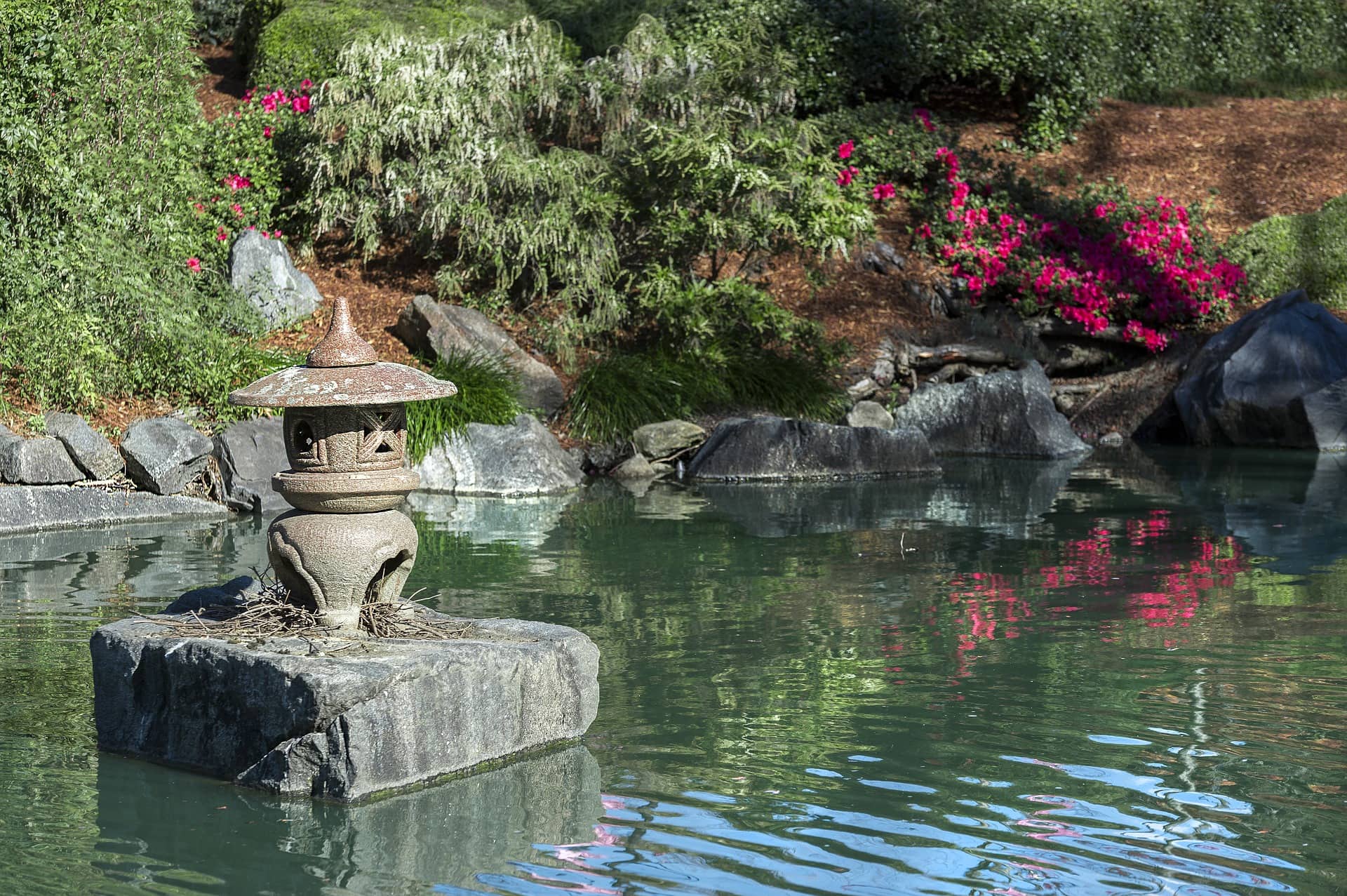What Is a Zen Garden?
-
Pete Ortiz
- Last updated:

Zen gardens, sometimes called Japanese dry gardens or Japanese rock gardens, are distinctive garden types that use carefully composed arrangements to create a minimalistic garden that aid with meditating. Zen gardens were traditionally used by Japanese monks, but they are now popular around the globe.
Just because you love gardens does not mean you’ll find a Zen garden particularly appealing. Because the purpose of the Zen garden is relaxation and meditative aid, this garden type is very minimalistic and intentional.
Keep reading to learn more about Zen gardens. You will likely be shocked to learn how much thought and process goes into the creation and maintenance of a Zen garden.
 Zen Gardens Explained
Zen Gardens Explained
To understand Zen gardens, you should look back at history. Japanese culture and religious beliefs have informed the Zen garden. Zen gardens today still retain a lot of the meaning behind these original types of gardens.

History of Zen Gardens
Historians know that Zen gardens existed in the Heian period of Japan, which took place from 794 to 1185. These gardens adopted the Song Dynasty’s garden philosophy, in which rocks were supposed to symbolize Mount Penglai. During this time, sand and gravel were incorporated into Zen gardens. In the Shinto religion, these features symbolize purity and were used in Zen gardens as a result.
While Europe was undergoing the Renaissance, the Muromachi period in Japan took place. During this time, there was a flourish in Japanese culture, including distinctive Japanese architecture and further development of the Zen garden. Zen gardens became a popular feature in Zen Buddhism, which the garden type is named after.
During the Zen period, these gardens included more than just stones. Certain water features and moss were also included, but the minimalism still remained. Most of the famous Zen gardens in Japan we still have today were developed during this time.
Over the last century, Zen gardens made a comeback in Japan, and they also appeared in many other countries as well. They are often found in museums of art. Interestingly, some individuals create mini Zen gardens to get the benefits of the Zen garden, even if they don’t have a space for an entire structure.
Principles Behind a Zen Garden
During the Zen Buddhism period, Zen gardens were developed around three principles: naturalness, simplicity, and austerity. Because of these principles, Zen gardens used stones to represent other parts of nature in a minimalistic design. Occasionally, other plants are used too, but they’re used sparingly.
If plants are added to the Zen garden, they are normally moss or carefully maintained shrubs. There is often a focal point in each Zen garden in the distance to serve as a focal point during meditations.

Zen Gardens vs Traditional Gardens
Because of the minimalism found in Zen gardens, they are very different from traditional gardens. Zen gardens use very few flourishing, colors, and plant types. Instead, rocks are the main focal point of Zen gardens, and only occasionally is water or other plants incorporated into its design. They do not rely on symmetry either.
In contrast, most traditional gardens use plants as the focal point. There’s often a lot of symmetry and color so that the garden is flourishing and beautiful. Although traditional gardens are great to look at, they don’t serve a meditative purpose like Zen gardens.
Because of the differences between Zen gardens and traditional gardens, it’s important that you heavily consider which garden type you want. If you want a garden full of color and life, a Zen garden is not for you. Instead, select a Zen garden if you want a simplistic area that can aid in peacefulness, relaxation, and meditation.
How to Create Your Own Zen Garden
Creating a Zen garden can be just as meditative as sitting in one. A lot of thought and effort has to go into the creation of the Zen garden to get the ultimate results you want. Here are the four most important parts of creating a Zen garden:

Find the Ideal Space
When creating your Zen garden, you want to start out with the location. Zen gardens do best whenever the garden itself is surrounded by walls so that the garden is a perfectly contained area. Outside of the garden, you will want some kind of seating area for yourself. Viewers are not supposed to go into the garden.
If you do not have a large space, there are ways that you can make mini Zen gardens that can be placed on your table or inside your home.
Focus on Rocks and Gravel
Once you know what space you want to use for your Zen garden, you need to gather sand, gravel, and rocks. Sand and gravel are used on the ground, whereas larger rocks are meant to be focal points or reminiscent of nature. Flat rocks, for example, can be used to represent a pond, whereas vertical rocks can be used to represent a mountain.
Place the rocks so they are not symmetrical. The most advanced Zen gardens position rocks in such a way that you cannot see them all from any one position. This will aid meditation and inward reflection.

Use Plants Minimally
If you want to add plants to your Zen garden, do so sparingly and select horizontally growing plans. Moss, for example, is one of the most popular plant types to use in a Zen garden. Avoid flowers and trees that grow upright.
Rake the Gravel
The last thing to do when creating your own Zen garden is to rake the sand or gravel. Raking the sand makes the ground look like water. You can create a ripple effect or make swirls around the rocks and have all the lines connecting.

How to Use a Zen Garden
The purpose of a Zen garden is to have a place where you can focus, relax, and possibly meditate. This means that Zen gardens are a functional tool to use for improving well-being.
If you want to use Zen gardens the traditional way, sit outside the garden and focus on one item, preferably one of the main rocks. Meditate while your focus stays on the object. Monks typically meditated on the meaning of life, but you can meditate on something else.
The maintenance of the garden should be used as a form of meditation, too. Focus intensely on the creation of swirls and ripples. For mini Zen gardens, this is how you will meditate – escape by focusing on the creation of swirls and ripples in the sand.
You don’t always have to specifically meditate. You can relax in the garden’s simplicity in the morning or whenever you are stressed.
 Final Thoughts
Final Thoughts
Zen gardens utilize rocks and gravel to mimic nature and aid your meditative practices. Even if you don’t specifically meditate, the garden can help you relax and unwind when you are stressed. The key is creating a Zen garden that is minimalistic.
If you want the most colorful garden, a Zen garden is not for you. Zen gardens are better for individuals who want relaxing scenery that helps them focus and relax when needed. The actual creation of a Zen garden is just as meditative and relaxing as enjoying it once it is finished.
Featured Image Credit: Pixabay
Contents

 Zen Gardens Explained
Zen Gardens Explained